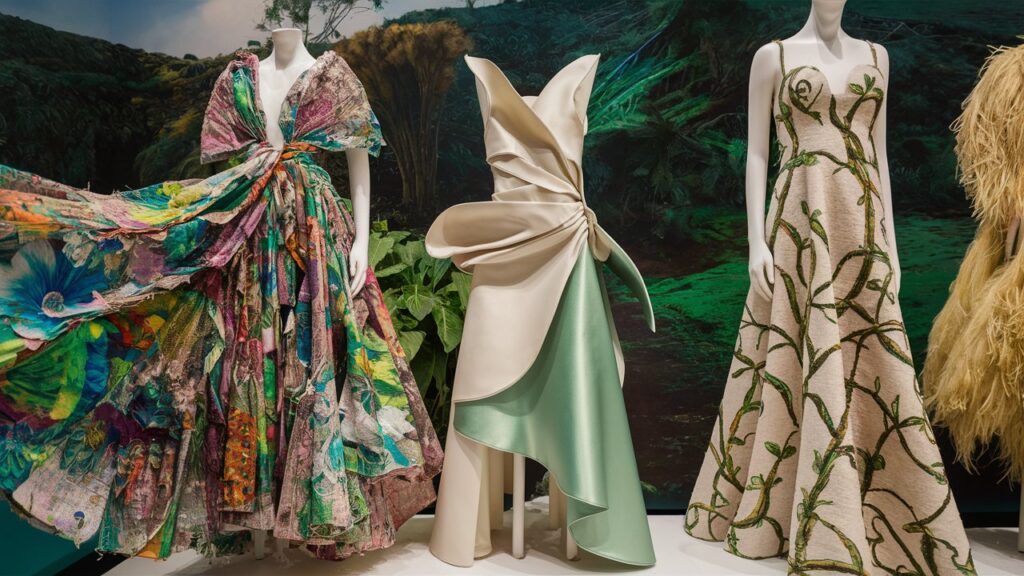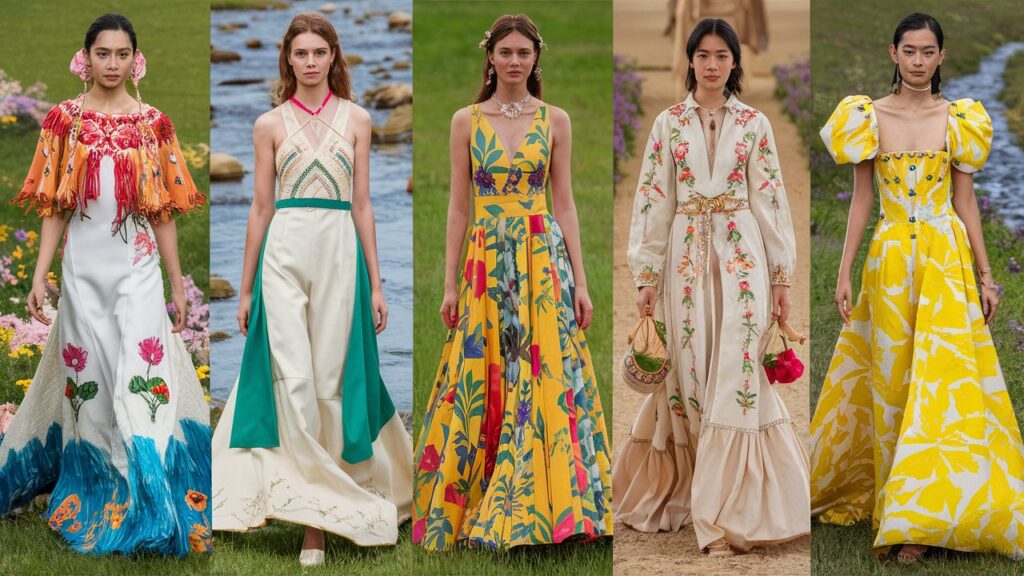Eco-Friendly Dress: A Stylish Step Towards a Greener World:
Every second, a truckload of textile waste heads to landfills. It’s as if our planet is hosting a never-ending fashion show, where the runway is a landfill and the outfits are discarded clothes.
It’s startling to learn that half of all clothing bought is never worn. It’s like people are stashing away outfits for a fashion event that never happens. When it comes to the fate of our garments, a staggering 80% end up in the trash, with only 1% getting recycled into new clothes. It’s like throwing an extravagant party and only inviting a tiny fraction of the guests.
But here’s the good news: every little effort counts in saving our beautiful environment. By choosing eco-friendly Dress and fashion, you can transform this wasteful trend into a sustainable style statement.
So, let’s explore how you can make a stylish impact with eco-friendly attire and contribute to a greener world—one fabulous outfit at a time.

Understand the Impact
The fashion industry leaves a huge footprint on our planet. From resource depletion to pollution, the effects are far-reaching. Every piece of clothing you buy has a story, and it’s essential to know if it’s a tale of sustainability or harm.
Eco-Friendly Dress: Secondhand Fashion
Thrift shops and vintage stores are treasure troves of unique pieces. You can find one-of-a-kind items while giving clothes a new life. Think about it – you’re not just saving money but also reducing the demand for new clothes.
Choose Natural Fabrics
Cotton, linen, and wool are nature’s gifts to fashion. These fabrics are breathable, comfortable, and often biodegradable. While they might need a bit more care, the environmental benefits are worth it.

Opt for Sustainable Brands
There are many brands out there committed to ethical and sustainable practices. Research brands that use organic materials, fair labor, and minimal waste. Supporting these businesses encourages positive change in the industry.
Extend the Life of Your Clothes
Proper care can dramatically extend the life of your clothes. Wash them less frequently, mend small tears, and store them correctly. These simple actions reduce the need for new clothes.
DIY and Upcycling

Get creative with your wardrobe. Transform old clothes into new pieces through DIY projects. Upcycling is a fantastic way to give your clothes a fresh look while reducing waste.
Rent or Borrow
For special occasions, consider renting or borrowing clothes. This reduces consumption and allows you to try different styles without adding to your wardrobe.
Be Mindful of Fast Fashion
Fast fashion fuels overconsumption and exacerbates environmental issues. Instead of buying trendy pieces that may fall apart quickly, slow down your shopping habits and invest in high-quality garments designed to last. Choose timeless styles over fleeting trends to reduce waste and make a lasting impact.
Educate Yourself
Arm yourself with knowledge about the fashion industry and its environmental footprint. Learn about various fabrics, production methods, and sustainability certifications. Understanding these aspects helps you make informed decisions and choose eco-friendly options that align with your values.
Spread the Word
Share your enthusiasm for sustainable fashion with friends and family. Encourage them to embrace conscious shopping habits and support ethical brands. By spreading awareness and promoting responsible choices, you contribute to a larger movement towards a greener world.
Every step you take towards sustainable fashion makes a difference. Embrace these practices to transform wasteful trends into a stylish, eco-friendly statement. Together, we can make a positive impact on our planet—one fabulous outfit at a time.
Facts and Figures
- Environmental Impact of Fashion: The apparel and footwear industries contribute approximately 8% of the world’s greenhouse gas emissions.
- Consumer Behavior: The average consumer now purchases 60% more clothing than they did 15 years ago, leading to increased waste and environmental strain.
- Textile Waste: Textiles account for about 5% of landfill space in the U.S., with Americans discarding over 80 pounds of clothing annually.
- Recycling Rates: Less than 1% of textiles and clothing are recycled into new textiles, highlighting a significant gap in sustainable practices.
- Water Usage: Producing a single t-shirt can require over 700 gallons of water, emphasizing the resource-intensive nature of clothing production.
- Fast Fashion’s Carbon Footprint: Fast fashion generates more carbon emissions per minute than driving a car around the world six times.
- Lifespan of Clothing: The average lifespan of a clothing item is about three years, contributing to the cycle of waste.
- Potential for Recycling: Nearly all textiles are recyclable, indicating a missed opportunity to reduce waste and promote a circular economy
Conclusion
Eco-friendly dressing is a journey, not a destination. It’s about making small changes that add up to a big difference. By choosing sustainable options, you’re not only protecting the planet but also embracing a stylish and conscious lifestyle. Remember, every choice you make has an impact. Let’s dress to impress, and impress with our eco-friendly style.
Keywords: eco-friendly fashion, sustainable fashion, ethical fashion, second-hand fashion, natural fabrics, DIY fashion, upcycling, fast fashion, conscious fashion

